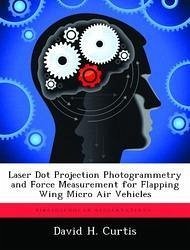Nicht lieferbar

Knock'em to the Stone Age! The Fusion of Micro Air Vehicles and Nano Sensors
Versandkostenfrei!
Nicht lieferbar
The future in precision, autonomous attack lies in the fusion of emerging sensor technology and the Micro-Air Vehicle (MAV). This paper demonstrates through trend analysis the MAV could attain a 30 to 60 micrometer wingspan by 2030, making real estate for sensors, processors, payloads, power systems, and periphery equipment a premium. Furthermore, as the MAV shrinks in size, the viscous forces of air become profound which requires new and imaginative approaches to producing lift. One promising answer to conquer these adverse lift forces is in the study and mimicking of insect flight. Nonethele...
The future in precision, autonomous attack lies in the fusion of emerging sensor technology and the Micro-Air Vehicle (MAV). This paper demonstrates through trend analysis the MAV could attain a 30 to 60 micrometer wingspan by 2030, making real estate for sensors, processors, payloads, power systems, and periphery equipment a premium. Furthermore, as the MAV shrinks in size, the viscous forces of air become profound which requires new and imaginative approaches to producing lift. One promising answer to conquer these adverse lift forces is in the study and mimicking of insect flight. Nonetheless, to employ the MAV effectively, sensor arrays and suites will play pivotal roles. In order to fit on the ever-shrinking MAV, sensors of nano and micron size are necessary. Using environmental scanning techniques, this paper explores emerging nano-antenna and Mirco-Electrical Mechanical System (MEMS) sensor technologies which show promise for use on MAVs. Nano-antennas will be individually limited to discrete frequencies, requiring panoply of antennas for a broad range of detection while a single MEMS resonate-sensor shows great potential as a transmitter/receiver in a broad spectrum of frequencies.









